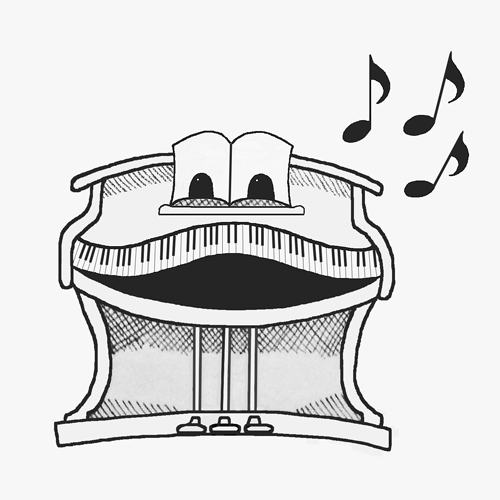Studio Tour: The Conductor
- Angela Umphers Rueger
- Feb 27, 2017
- 3 min read

There’s a lot one can do with a discarded piano. Photos of impressive pieces of furniture are passed around social media sites every day. Jewelry made from the copper strings is also quite common. The geometric patterns that can be formed with the pieces are endless. And while I too plan to make furniture, jewelry, and more geometric patterns, one of my favorite things to do with piano parts is to make abstract art. Today I’d like to introduce you to my first and favorite abstract work: The Conductor.
Back in 2012, when I received my first piano, I began playing around with the pieces of the action, holding them up at various angles to see what ideas came to mind. In a way, it was like looking up at the clouds to find elephants, ducks, and minivans.... The action pieces are made primarily of wood, and almost immediately I saw stick figures. Holding two sticker assemblies “back to back,” I saw a man with his hands in the air... a conductor! The wippen formed his tuxedo jacket while the sticker tongue and flange resembled feet sticking out from around the base of the music stand. I glued the jack to the backcheck felt to form the sleeves, and I snipped the bridle wire from off the wippen and used it as a baton, gluing it in place against the backcheck felt, which serves as a hand. A hammer serves as the conductor’s head. (I also found a diagram on the Internet and have used it extensively to learn the names of these parts. ☺)

Next, the conductor needed a music stand. It took a while, but I disassembled a good many more pieces of the action until I came up with 11 more flanges, which I cleaned and then arranged into the shape of a music stand. One of the flanges had to be sanded down a little to fit. I glued them together, then attached them to the conductor, using the wippen flanges as support.
With all the pieces glued together, my conductor was complete. But how to display him? He was too thin to be free-standing, so I needed to mount him onto some surface. The first three conductors were mounted onto stretched canvas, and I put the next two on museum-grade hardbords. My next ones, coming later this year, will be mounted onto pieces of piano wood. So far, all of the backgrounds have been painted to resemble a portion of the stage with a crowd seated behind him, as if listening to the performance. No two look exactly alike, as I like to experiment with different colors and brush strokes. (I could customize the color choices for a commissioned Conductor.) I haven’t decided yet whether I’ll paint the background onto the piano wood or allow the grain to show through. I suppose it depends on the appearance of the wood. Some of the pieces are still in excellent condition, while others have been badly abused.

The last step was to add music to the empty music stand. Using the pages of our church hymnal and actual choir octavos, I reduced the music repeatedly on the copy machine until I had a tiny score that would fit nicely on the stand. I mounted the printed music onto a piece of cardstock for stability, then glued it in place. After closing up the backs of the canvases, and attaching the mounting hardware to all, the pieces were finished and ready to sell. Also, as I do with everything I make, I wrote up a brief description of the story behind my art, with a list of the parts used to make the Conductor, and fastened that to the back of the piece.
The Conductor continues to be a favorite, not only with me, but with my customers as well. Not only that, but it was the inspiration for another musician, the French horn player, which I’ll tell you about next month. Most likely by this same time next year, there will be other instrumentalists as well. Only time will tell....





































Kommentare